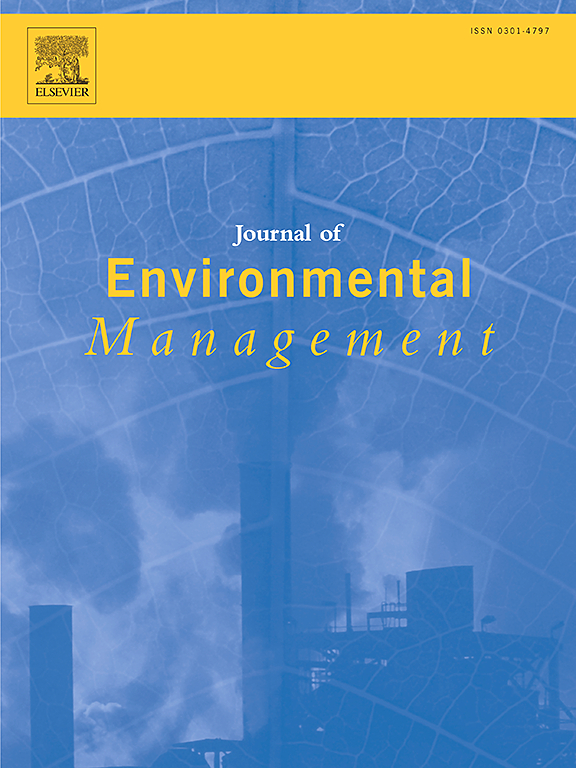评估以自然为基础的解决方案作为安第斯高纬度热带帕拉莫生态系统可持续土地和水资源管理战略的潜力。
IF 8.4
2区 环境科学与生态学
Q1 ENVIRONMENTAL SCIENCES
引用次数: 0
摘要
以自然为基础的解决方案(NbS)作为恢复水量丰富的生态系统(如巴拉莫)的可行战略,正受到越来越多的关注。然而,由于缺乏有关其有效性的证据,加之对其政治、经济、社会、技术、环境和法律(PESTEL)背景的了解有限,阻碍了其广泛采用。为了弥补这一不足,我们提出了一个多方法框架,(i) 捕获影响巴拉莫生态系统被动生态恢复实施的 PESTEL 因素,作为 NbS 的衡量标准;(ii) 评估其相关的环境影响。我们的方法将范围审查与遥感技术、水质评估和相关性分析相结合。我们以厄瓜多尔安第斯社区的主要水源地--上皮塔河和上库图奇河流域为重点,揭示了 20 世纪帕拉莫生态系统恶化的主要原因是骆驼放牧和松木生产。为了应对这些威胁,从 1999 年开始,在各种 PESTEL 因素的指导下,自下而上的管理努力促进了政策、法规、社会协议和财政支持,从而在 2010 年至 2017 年期间实现了皮塔河上游流域的被动生态恢复。其结果是,到 2022 年,73.4% 的水质优良的天然 páramo 得到保护。相比之下,上库特奇河流域自上而下的管理效果不佳,因为国家战略未能解决 PESTEL 因素给当地环境带来的挑战。因此,到 2022 年,只有 31.6% 的天然 páramo 水质仍然较差。我们的研究首次证明,被动式生态恢复对这些生态系统有益,而缺乏被动式生态恢复则会导致重大变化,需要额外的恢复战略。本文章由计算机程序翻译,如有差异,请以英文原文为准。
Assessing the potential of nature-based solutions as sustainable land and water management strategies in the high tropical Andean páramo ecosystem
Nature-based solutions (NbS) are gaining attention as viable strategies for restoring water-rich ecosystems such as the páramo. However, the lack of evidence on their effectiveness, coupled with a limited understanding of their political, economic, social, technological, environmental, and legal (PESTEL) context, hinders their widespread adoption. To address this gap, we propose a multi-method framework that (i) captures PESTEL factors influencing the implementation of passive ecological restoration in páramo ecosystems as a measure of NbS and (ii) assesses its associated environmental impacts. Our approach integrates a scoping review with remote sensing techniques, water quality assessment, and correlation analyses. Focusing on the Upper Pita and Upper Cutuchi River Basins-key water sources for Andean communities in Ecuador, we reveal that the deterioration of their páramo ecosystems in the 20th century was mainly due to camelid grazing and pine timber production. In response to these threats, bottom-up management efforts starting in 1999, guided by various PESTEL factors, promoted policies, regulations, social agreements, and financial support for achieving passive ecological restoration between 2010 and 2017 in the Upper Pita River Basin. As a result, the conservation of 73.4% of natural páramo with excellent water quality in 2022. By contrast, top-down management in the Upper Cutuchi River Basin was ineffective because national strategies failed to tackle the local environmental challenges posed by the PESTEL factors. Hence, only 31.6% of the natural páramo remained with poor water quality by 2022. Our study is the first to demonstrate that passive ecological restoration benefits these ecosystems, while its absence results in significant changes that require additional restoration strategies.
求助全文
通过发布文献求助,成功后即可免费获取论文全文。
去求助
来源期刊

Journal of Environmental Management
环境科学-环境科学
CiteScore
13.70
自引率
5.70%
发文量
2477
审稿时长
84 days
期刊介绍:
The Journal of Environmental Management is a journal for the publication of peer reviewed, original research for all aspects of management and the managed use of the environment, both natural and man-made.Critical review articles are also welcome; submission of these is strongly encouraged.
 求助内容:
求助内容: 应助结果提醒方式:
应助结果提醒方式:


